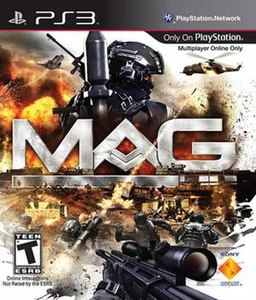Greetings everyone. I know many of you are inclined to not believe my inside source - but it has told me, that as a scientific experiment, the Playstation 3 game MAG: Massive Action Game, is employing the Cell processor to do all the Transform and Lighting for the game.




It sort of looks like the source is right, doesn't it? The style of the game - it is different from other games which use GPUs to do Transform and Lighting.
Now what have we learned from this game, about the Cell processor? Given the fact that the game can support 256 online players, that's certainly a technical achievement. Call of Duty 4 supports 16. No other game does 256 online player. But the maps are not that detailed. The game looks like a Quake III era game.
Thus, Cell is not not that good at floating-point ops. 7 SPEs, but with a severely hampered memory bus. Token-ring. No load-store units or branch units. Meaning it stalls on IF and other conditionals. 1 128-bit SIMD unit and 1 double precision floating point unit per core for SIMD, 256 Kbytes of SRAM cache. What is good at floating-point ops? The Power7 architecture. 4 MB of eDRAM cache per core, 1 Altivec/Velocity Engine/VSX 128-bit floating point unit, 4 double precision floating points units, load-store units, a branch unit, etc.




It sort of looks like the source is right, doesn't it? The style of the game - it is different from other games which use GPUs to do Transform and Lighting.
Now what have we learned from this game, about the Cell processor? Given the fact that the game can support 256 online players, that's certainly a technical achievement. Call of Duty 4 supports 16. No other game does 256 online player. But the maps are not that detailed. The game looks like a Quake III era game.
Thus, Cell is not not that good at floating-point ops. 7 SPEs, but with a severely hampered memory bus. Token-ring. No load-store units or branch units. Meaning it stalls on IF and other conditionals. 1 128-bit SIMD unit and 1 double precision floating point unit per core for SIMD, 256 Kbytes of SRAM cache. What is good at floating-point ops? The Power7 architecture. 4 MB of eDRAM cache per core, 1 Altivec/Velocity Engine/VSX 128-bit floating point unit, 4 double precision floating points units, load-store units, a branch unit, etc.
